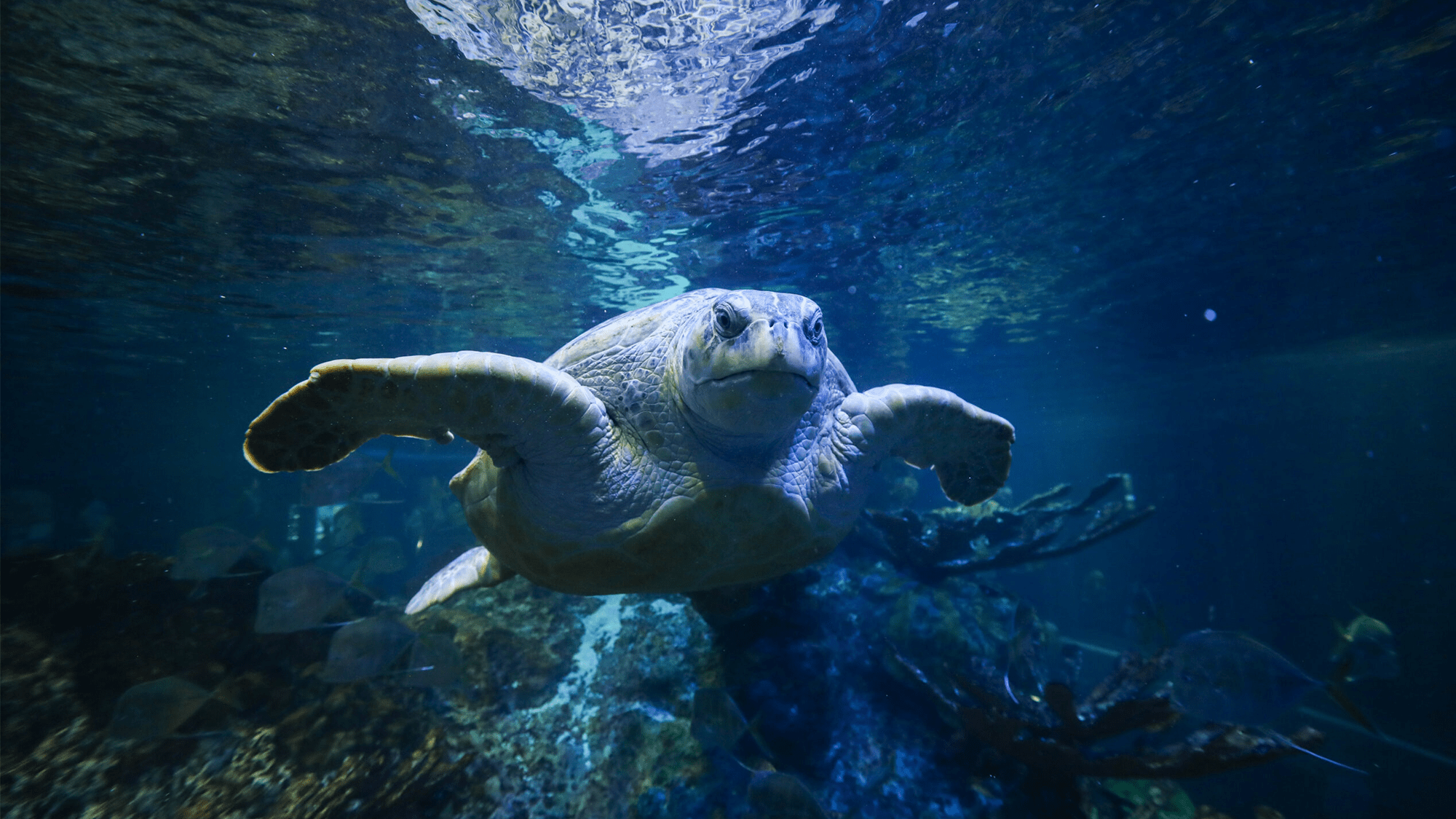

A green sea turtle believed to be up to 95 years young was given a clean bill of health this week. Myrtle the ancient green sea turtle has been at Boston’s New England Aquarium for more than 50 years and shows no signs of slowing down, despite being in the upper levels of her life expectancy.
[Related: Endangered sea turtles build hundreds of nests on the Outer Banks.]
Turtles and tortoises are well known for their longevity. Depending on the species, they can live anywhere from 25 to 200 years. In December 2023, a tortoise named Jonathan celebrated his 191st birthday and is currently the oldest known tortoise. According to Guinness World Records, the previous oldest known tortoise was a radiated tortoise named Tu’i Malila. British explorer Captain James Cook presented Tu’i Malila to the royal family of Tonga sometime around around 1777. Tu’i Malila died in 1965 at the estimated age of 188.

Myrtle still has a ways to go to live up to the standards set by Jonathan and Tu’i Malila, so physical exams like this one can help veterinarians keep her healthy. To perform this semi-annual reptilian check-up, veterinarians first had to get Myrtle into an underwater crate and hoist all 500-plus pounds of her from her home in the aquarium’s Giant Ocean Tank. Once she was safely removed from the tank, a team of trained veterinarians, vet technicians, and aquarists drew blood, checked her flippers, and made sure her mouth, nose, and eyes were all working properly. She then received an ultrasound, hopped on the scale, and was returned to her tank.
All of this was done while the aquarium was open to visitors, who assured onlookers that the veterinarians were trained professionals safe from Myrtle’s powerful jaws. Her serrated teeth are likely strong enough to crush grass and some small hard shelled organisms.

According to ocean tank manager Mike O’Neill, she is “in robust condition,” despite her age. Myrtle is thought to be up to 95 years old, which would place her just beyond the upper boundaries of the species’ longevity.
“There’s every reason to believe Myrtle will stick around for years to come,” O’Neill told the Associated Press. “She is iconic. One of the really special things we see is parents with their kids who say, ‘This is Myrtle, she has been here since when I was a kid.’ She has this multigenerational impact, which is really special.”

Since first arriving from an aquarium in Provincetown, Massachusetts in 1970, Myrtle has been visited by roughly 50 million patrons. According to the New England Aquarium, she has gotten quite used to humans in that time and enjoyed having her schell scratched and eats up to six and a half pounds of food per day. She currently shares her space with tankmates Carolina and Retreat. These loggerhead sea turtles are about half her age and size. The loggerheads also received physicals and are also doing well, according to O’Neill.
[Related: Safely share the beach with endangered sea turtles this summer.]
The second-largest species of sea turtle, green sea turtles live in tropical and subtropical oceans all over the world. The United States is home to six species of native sea turtles–green, hawksbill, Kemp’s ridley, leatherback, loggerhead, and olive ridley. They primarily feast upon algae and seagrass.
All six sea turtle species in the US are protected by the Endangered Species Act, with green sea turtles listed as endangered and decreasing in population by the International Union for Conservation of Nature. The National Oceanic and Atmospheric Administration (NOAA) recommends reducing marine debris, not releasing balloons that often end up polluting the ocean, leaving turtle nests alone, and keeping these areas dark at night as some small steps to better protect sea turtles.
